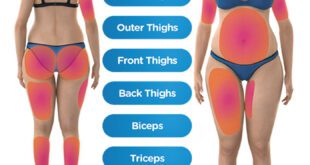 As temperatures soar and outdoor activities beckon, understanding the critical relationship between UV exposure and proper hydration becomes essential for maintaining your health and safety. UF Health’s emergency care teams see a significant uptick in heat-related illnesses and severe sunburns during warmer months, making awareness and prevention more important than ever.
As temperatures soar and outdoor activities beckon, understanding the critical relationship between UV exposure and proper hydration becomes essential for maintaining your health and safety. UF Health’s emergency care teams see a significant uptick in heat-related illnesses and severe sunburns during warmer months, making awareness and prevention more important than ever.
The Hidden Dangers of UV Exposure
Ultraviolet radiation affects your body in ways that extend far beyond visible sunburn. While your skin works to protect itself from UV damage, this process generates heat and increases your body’s temperature. Simultaneously, UV exposure triggers inflammatory responses that can accelerate fluid loss through your skin. This dual effect creates a perfect storm for dehydration, especially during prolonged outdoor activities.
At UF Health, we regularly treat patients who underestimate how quickly dehydration can occur when combined with sun exposure. The body’s cooling mechanisms become overwhelmed, leading to heat exhaustion or potentially life-threatening heat stroke.
Recognizing the Warning Signs
Heat-related emergencies often develop gradually, making early recognition crucial. Watch for symptoms including excessive thirst, dizziness, fatigue, headache, nausea, and decreased urination. More severe signs requiring immediate emergency care include confusion, rapid heartbeat, high body temperature and cessation of sweating despite continued heat exposure.
Sunburn symptoms can appear hours after exposure and may include red, painful skin, swelling, blistering, fever and chills. Severe sunburns covering large body areas or accompanied by systemic symptoms warrant emergency medical attention.
Smart Prevention Strategies
Effective protection requires a multi-layered approach combining sun safety with proactive hydration. Begin hydrating well before heading outdoors, drinking water consistently throughout the day rather than waiting until you feel thirsty. The sensation of thirst indicates that dehydration has already begun.
Choose broad-spectrum sunscreen with SPF 30 or higher, applying it generously 30 minutes before sun exposure and reapplying every two hours or after swimming or sweating. Don’t forget often-missed areas like ears, feet, and the back of your neck.
Timing matters significantly. UV rays are strongest between 10 AM and 4 PM, so plan intensive outdoor activities for early morning or late afternoon when possible. When midday exposure is unavoidable, seek shade frequently and take regular breaks indoors or under cover.
Clothing and Equipment Choices
Your wardrobe can serve as your first line of defense. Lightweight, long-sleeved shirts and pants made from tightly woven fabrics provide excellent protection while allowing air circulation. Dark colors absorb more heat but also block more UV radiation, while light colors reflect heat but may allow more UV penetration. Wide-brimmed hats protect your face, neck and ears, while UV-blocking sunglasses safeguard your eyes and the delicate surrounding skin.
Hydration Best Practices
Water remains the gold standard for hydration, but electrolyte replacement becomes important during extended outdoor activities or heavy sweating. Sports drinks can be beneficial, but be mindful of added sugars. Natural alternatives like coconut water provide electrolytes without excessive additives.
Avoid alcohol and excessive caffeine, as both can contribute to dehydration. Monitor your urine color as a hydration indicator – pale yellow suggests adequate hydration, while dark yellow indicates the need for more fluids.
When to Seek Emergency Care
Don’t hesitate to seek immediate medical attention if you or someone else experiences severe symptoms. Heat stroke is a medical emergency requiring rapid intervention. Signs include body temperature above 103°F, altered mental state, hot and dry skin, rapid pulse and potential loss of consciousness.
UF Health’s emergency departments are equipped to handle heat-related emergencies with rapid cooling techniques, IV fluid replacement and comprehensive monitoring. However, prevention remains far superior to treatment.
By combining smart sun protection with consistent hydration practices, you can safely enjoy outdoor activities while protecting your long-term health. Remember, emergency care is always available when prevention isn’t enough, but taking proactive steps today can help ensure you never need it.
UFHealth.org/specialties/emergency-medicine/central-florida
 Central Florida Health and Wellness Magazine Health and Wellness Articles of the Villages
Central Florida Health and Wellness Magazine Health and Wellness Articles of the Villages



